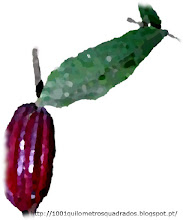
Calcular a nossa pegada ecológica. A pegada ecológica é uma estimativa dos recursos naturais utilizados por cada um de nós (população), sendo expressa em área da superfície do planeta (oceanos e continentes) necessária para que cada um de nós (população) pudesse manter o seu nível de vida actual, tratando convenientemente os seus resíduos, dada a tecnologia existente.

LIVING ROOM
Power outlet vs. Power strip: Plugging your TV and VCR/DVD into a power strip rather than an outlet will save you about 2 percent on your annual electricity bill. Even when you turn these appliances off, they continuously leak up to 15 watts of electricity if they're plugged into an outlet. When plugged into a power strip, however, these appliances leak only about one to three watts.
Standard door vs. Standard door with storm door: Because a storm door provides more insulation than just a standard door, you can save—depending on your climate zone—up to 2 percent more on your annual energy costs. Doors are among the common places where air escapes, and drafty doorways can account for up to 2 to 3 percent of leakage in an average house. But a word of advice: Don't install exterior glass storm doors where they would receive direct sunlight. Exterior storm doors can trap heat, which can damage the entry door.
KITCHEN
Hand wash vs. Dishwasher: You'll use up to 35 percent less water by doing a full load of dishes, which haven't been pre-rinsed, in your dishwasher instead of by hand. You can also save about 15 percent on total dishwasher energy use if you select the air-dry setting or open the dishwasher's door instead of using its drying cycle.
Freezer on the side vs. Freezer on the top or bottom: A fridge with a top or bottom freezer will save 15 percent more in annual refrigerated-related energy costs than a side-by-side model, which lets more chilled air escape. To be greener still, steer clear of refrigerators with icemakers and water dispensers in the door. They can increase energy use by almost 20 percent.
Gas oven with electric ignition vs. Electric oven: A gas oven is 50 percent more efficient than an electric oven. If you're interested in cutting costs further, try baking with glass or ceramic pans instead of metal. An electric ignition also helps save gas because its pilot light is not continuously burning.
BEDROOM
Incandescent bulbs vs. Compact fluorescent bulbs: Fluorescent bulbs will save you between 50 and 75 percent in annual lighting costs over incandescent bulbs. Even though these bulbs are initially more expensive, they give off less heat and last up to ten times longer than incandescent ones. If you do have incandescent bulbs, think about installing a dimmer switch and reducing your bulbs' brightness by half. This will make them last longer.
Laptop computer vs. Desktop computer: A laptop will give you annual computer-related energy savings of as much as 50 percent over a desktop. For additional savings, enable the sleep mode on your laptop after five minutes of inactivity. If you have a desktop computer with an old-cathode ray tube (CRT) monitor, consider replacing it with a liquid crystal display (LCD) screen. A 14-inch (35-centimeter) LCD monitor uses up to 75 percent less energy than a 14-inch CRT monitor.
Single-pane window vs. Double-pane window: Depending on your climate, you can reduce your utility bill by as much as 10 percent with double-pane windows. To save even more, look for windows with the Energy Star label. They meet strict energy-efficiency guidelines set by the U.S. government and can save up to 15 percent in any climate. However, if your home already has single-pane windows and you live in a cold climate, consider storm windows. They're almost as efficient as double-pane windows and cheaper. Other affordable options include caulking and weather stripping.
UTILITY ROOM
Furnace thermostat above 68°F (20°C) vs. Below 68°F during cold weather: Each degree set below 68°F (20°C) during colder weather uses 3 to 5 percent less heating energy than each degree set above 68°F. You can also buy a programmable thermostat to make these temperature changes for you automatically. And here's another tip to keep your furnace efficient: Change your air filter once a month during heavy usage.
Top-load washer vs. Front-load washer: A front-load washer will cut your water and washer-related energy use by more than half over a top-load washer. You only need about 10 to 20 gallons (40 to 80 liters) of water to do a full load, while a top-load washer would have required about 40 gallons (150 liters). If you want to increase your savings even more, wash only with cold water the next time you empty your hamper.
Tankless water heater (heats water instantly) vs. Storage tank water heater (conventional water heater): Tankless water heaters are about 10 to 30 percent more energy efficient than storage tanks, which constantly have to keep water warm and are common in most U.S. homes. Popular in Japan and Europe, tankless models heat water only as needed in the pipe. If you're not in the market for a new water heater anytime soon, insulate your water pipes to reduce heat loss. From the tank, insulate at least the first six feet (two meters) of pipe.
Electric dryer vs. Gas dryer: A gas dryer will save you about 50 percent in annual dryer energy costs over an electric model. And if you use the moisture sensor, a feature on newer electric and gas models that automatically shuts off the dryer when clothes are dry, you'll trim another 15 percent. But keep one thing in mind: Hanging your clothes out to dry expends only your own energy.
BATHROOM
Faucet vs. Faucet aerator: A faucet aerator, which restricts water flow, will cut your annual water consumption by 50 percent. You can cut your water use even more by turning off the water when you brush your teeth. This can save up to 4.5 gallons (17 liters) every time you brush. If you shave, fill the basin and you’ll only use a gallon of water instead of the 15 gallons (57 liters) that would have gone down the drain if you’d kept the faucet running.
Bath vs. Shower with low-flow head: If you keep your shower to seven minutes under a low-flow showerhead, you'll use about 14 gallons (53 liters) of water or less. Baths usually require about 20 gallons (80 liters), the same as a ten-minute shower.
Low-flow toilet vs. Pre-1994 toilet: A low-flow toilet only uses 1.6 gallons (6.1 liters) per flush, while a pre-1994 model requires about 3.5 gallons (13 liters) per flush. If you have a pre-1994 model, adjust your float valve so it will admit less water into the toilet's tank.
EXTERIOR
Dark shingles vs. Light-colored shingles: Light-colored shingles can save up to 10 percent more on your annual cooling costs than a roof with dark shingles, and up to 20 percent in hot climates like Arizona and Florida.
Gasoline car vs. Hybrid car: Hybrid cars are twice as fuel efficient as gasoline-powered cars, averaging around 50 miles (80 kilometers) to the gallon. Other tips to cut annual fuel consumption include properly inflating your tires, which can improve your gas mileage by around 3.3 percent. Avoiding aggressive driving such as speeding, rapid acceleration, and hard braking is also a good idea. This can reduce gas mileage on the highway by 33 percent and around town by 5 percent. But some of the best ways to save gas are walking, carpooling, or taking public transportation.
Traditional landscape (large lawns) vs. Xeriscaping (native plants): You can use 50 percent less water with a landscape consisting of drought-resistant plants and grasses. Xeriscaping, which is centered on this practice, also advocates small lawns, native plants, efficient irrigation, and mulches, which slow erosion and evaporation. And don’t forget to group together plants with similar watering needs into specific zones.






Sem comentários:
Enviar um comentário